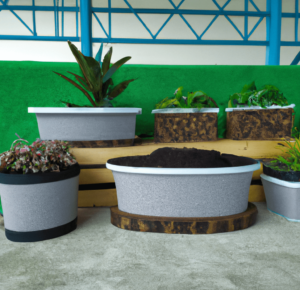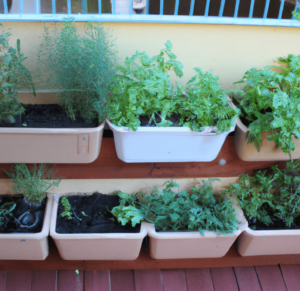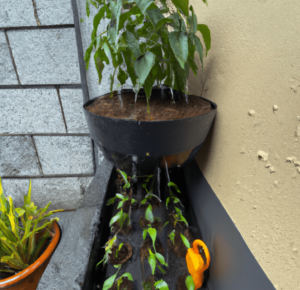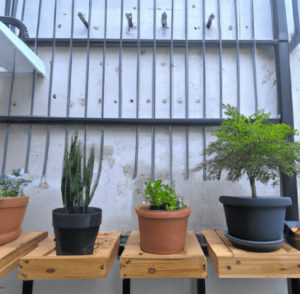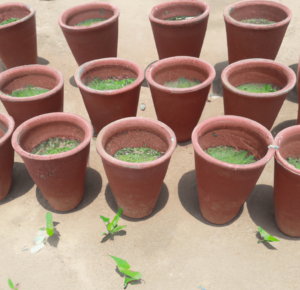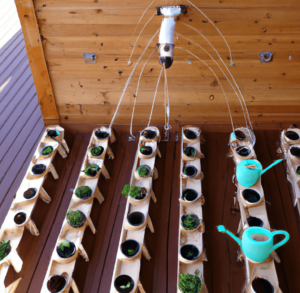Gardening success depends on your ability to recognize and use the various container materials available. You may grow a garden in a small area while maintaining control over the soil, water, and plant nutrition by using containers. However, in order to guarantee ideal plant growth and health, choosing a container’s material is essential.
You can choose from a variety of container materials, such as plastic, ceramic, wood, metal, or glass. When choosing a container material, it’s important to take into account elements like water retention, durability, and recycling capability. Each material has benefits and drawbacks. Different container materials might have an impact on water retention and drainage. Just like you learned about the role of pot size in plant growth and development, here’s our guide on understanding and using different types of container materials in your garden.
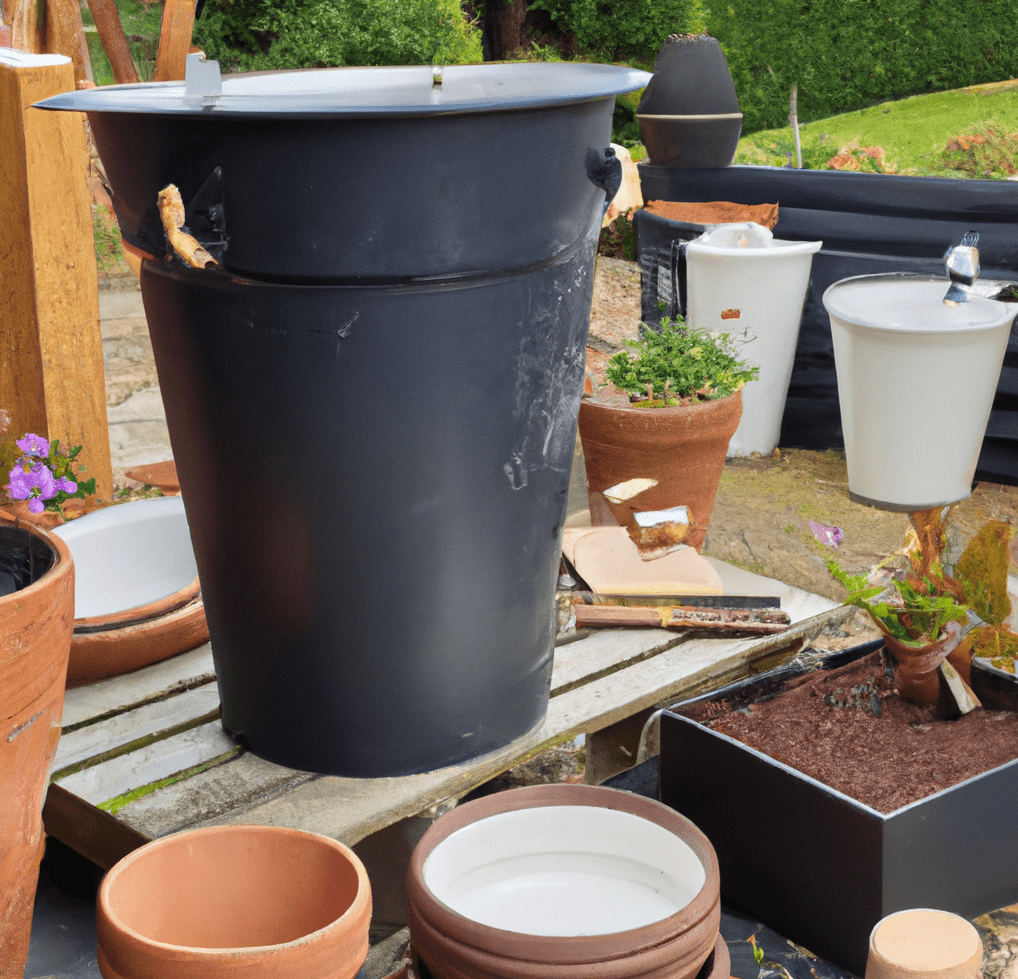
Types of Container Materials
Understanding and using different types of container materials in your garden can have a big impact on your plant’s health, development, and overall performance. Different container materials offer different benefits so here are the most popular ones for planters:
- Plastic Containers: Plastic is one of the most widely used materials for containers since it is inexpensive, lightweight, and durable. For people who constantly move their plants, it’s a fantastic option. Plastic containers have the ability to hold heat, which can occasionally hurt the soil’s roots. They are not the solution that’s most environmentally beneficial.
- Clay and Terracotta Pots: Because they are porous and provide excellent drainage, clay and terracotta containers are a great option for plants that like drier soil. The fact that these containers can breathe also aids in keeping the roots from becoming soggy. They can, however, be cumbersome and delicate, making them challenging to transport.
- Ceramic Containers: Ceramic containers are a great choice for indoor plants because they are available in a variety of hues and patterns. They’re perfect for plants that need moist soil because they are strong and can hold water efficiently. They can be heavy and pricey, though, and some models might not be appropriate for outdoor use.
- Metal Containers: Metal containers can be very fashionable and long-lasting. Examples are those made of aluminum, tin, or copper. They can endure extremely high temperatures and are excellent for outdoor use. Metal containers, however, have a tendency to heat up, which might harm the soil’s roots. Over time, they may rust as well.
- Fabric Containers: Fabric containers are a great choice for people with limited space because they are lightweight and convenient to store. They are also environmentally friendly and by allowing for air pruning, they can encourage strong root growth. They might, however, dry out rapidly and need watering more frequently.
- Wooden Containers: Wooden containers are a popular option for gardeners who prefer a natural and rustic appearance. They are resilient and have a long lifespan. Wooden containers are porous as well, allowing for efficient circulation and water drainage. To stop rot and decay, they could need greater maintenance, including routine sealing.
The ideal container material for your plants will ultimately depend on your unique requirements and the plants you are cultivating. After learning about understanding and using different types of container materials in your garden, take into account elements like water retention, robustness, weight, and aesthetic appeal.
The Pros and Cons of Each Type, As Well as the Types of Plants That Work Best in Them.
You can choose the best container for your plants by understanding and using different types of container materials in your garden. This means learning about the different pros and cons of the materials.
The most popular containers for growing plants are traditional pots. They’re strong, available in a range of sizes and materials, and simple to locate and purchase. They’re perfect for a variety of plants, even ones with deep roots like tomatoes, peppers, and eggplants.
.Plants can grow without soil in water-based systems, such as hydroponic ones. In comparison to soil-based cultivation, they are effective and can result in faster growth and larger yields. They need a lot of upkeep, too, and any water problems can swiftly destroy the plants. Leafy greens, herbs, and small produce like cherry tomatoes grow well in hydroponic systems.
Grow bags, which are composed of fabric, offer great plant drainage. They are also portable and light in weight. Although they tend to decompose more quickly than other types of containers, they do need frequent watering because the soil dries out quickly. Plants with shallow roots, including lettuce, herbs, and strawberries, respond well to grow bags.
Growing plants in recycled trash is an inventive and environmentally friendly method. There is a chance that chemicals and toxins can leak into the soil, and it can be difficult to obtain materials that are safe for plants. Herbs, lettuce, and succulents are small plants with shallow roots that do well in repurposed garbage cans and there are lots of benefits to using planters for herb gardens!
No of the kind of container you use, it’s crucial to make sure the plants have enough room for their roots to spread out, good drainage, and enough access to water and nutrients. These are all part of understanding and using different types of container materials in your garden.
Factors to Consider When Selecting Container Materials
As you’re learning about understanding and using different types of container materials in your garden, there are factors to consider before choosing one specific material. These elements include the plant’s size and growth patterns, the amount of light it will get, and the environment it will be grown in. The proper container material must be chosen for the plant’s health and growth because it comes in a variety of sizes and shapes.
For instance, plants with deep root systems need larger containers that will give their roots room to expand. Smaller containers, however, can support the growth of plants with shallower roots. Additionally, although plants that prefer shaded regions will grow in containers that provide less light, those that prefer direct sunlight need containers that allow for more light.
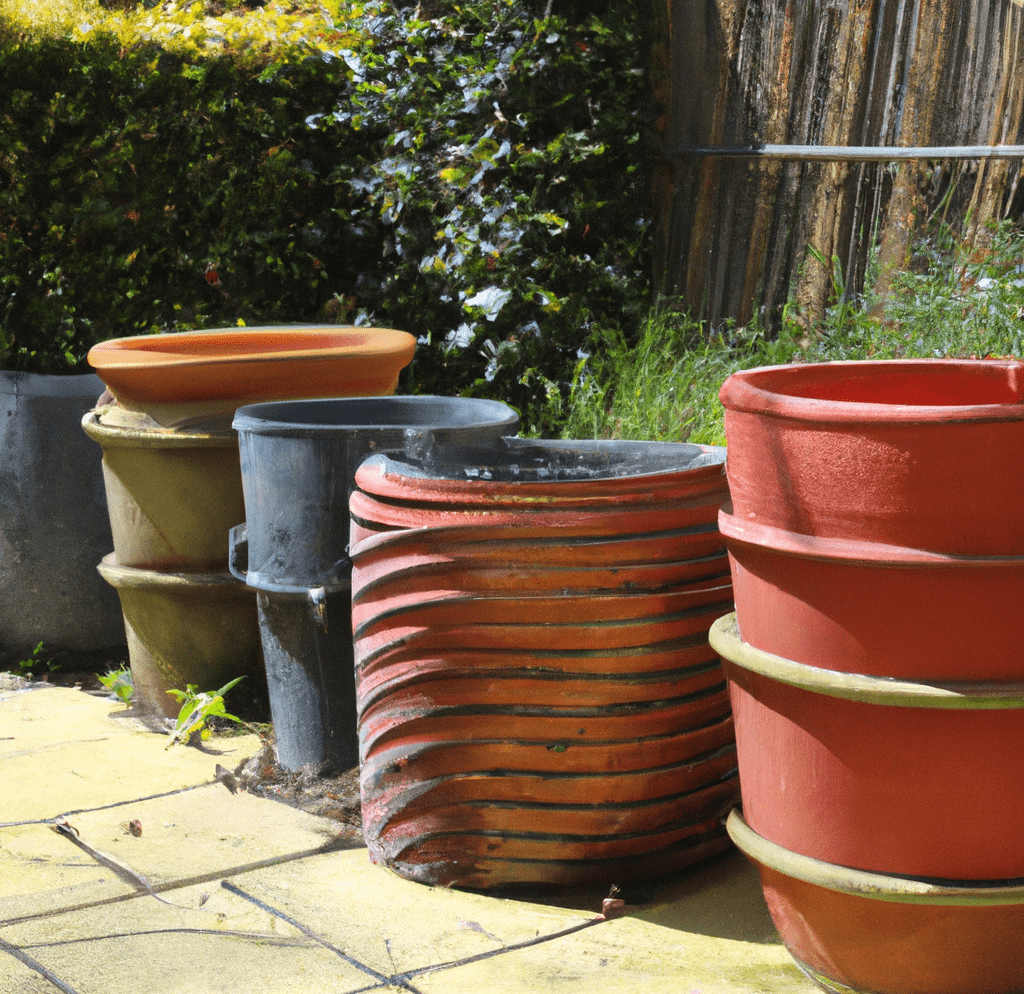
Tips on How to Properly Care for Different Types of Container Materials
As you’re understanding and using different types of container materials in your garden, here are our tips on maintaining different containers:
- Plastic Containers: Containers made of plastic are portable and lightweight. They come in a variety of sizes and forms and are also reasonably priced. Use water and mild detergent to clean plastic storage containers. Rinse well to get rid of any soap residue.
- Terracotta pots: These pots are porous and allow air to flow around the roots of the plant, improving drainage. Use water and a stiff brush to clean clay pots. Use soap sparingly because it can pierce the porous surface.
- Wooden containers: These are strong and give the landscape a natural look. They do, however, require routine care because they are prone to decay. Make use of water and a stiff brush to clean wooden vessels. After cleaning, be sure to completely dry everything.
For the health and development of your plants, proper yard waste management is essential. You can make sure that your plants thrive and enhance the attractiveness of your yard by choosing suitable container materials and providing them with the necessary care. This is vital in understanding and using different types of container materials in your garden.
Designing With Container Materials
Container gardening is a great choice if you want to create a garden but don’t have much outdoor area. When understanding and using different types of container materials in your garden, you can design the garden of your dreams with different container materials:
- Quality of the Soil: Consider the soil quality required by the plants you intend to cultivate before choosing the materials for your containers. For instance, although some plants like soil that retains moisture, others prefer well-draining soil. For plants that prefer wetness, you must select a material for the container that can hold moisture, such as plastic or glazed ceramics. For plants that require well-draining soil, porous materials like unglazed terracotta or concrete are a great option since they can aid in the promotion of proper drainage.
- Carbon Impact: It’s crucial to take the container materials’ carbon footprint into account. Materials like plastic need a lot of energy to make and have a large carbon footprint. However, containers made of recycled materials, such as recycled plastic, can be a great environmentally friendly option. A garden can feel organic and natural by using containers made of organic materials like clay, wood, or bamboo, which also have a lower carbon footprint than plastic.
- Adding Visual Interest: One advantage of container gardening is that it gives you the freedom to express your creativity in the design. To add visual appeal to your garden, you can utilize a variety of container materials. One way to make a display stand out is to use a variety of tiny and large containers made of various materials. Using containers made of the same material but in various sizes and shapes will also help you achieve a unified appearance.
- Overall Goal: It’s crucial to consider how the containers will integrate into the overall aesthetic of the garden when developing a container garden. For instance, sleek containers made of materials like metal or polished concrete can be a great choice if you have a modern landscape with clear lines. Natural-material containers, including those constructed of wood or clay, can enhance the appearance of a more rustic garden. One way to harmonize the overall appearance of the garden is to use containers that are the same color or material as other garden components, such as furniture or accessories.
- Farms and Fruit: Growing fruit in containers might be a terrific option if you’re interested in doing so and don’t have a lot of outdoor space. Fruit trees and bushes can do well in containers made of plastic or glazed porcelain, while berry plants can do well in containers made of natural materials like wood. Simply choose a container size that corresponds to the plant’s mature size, and check that the soil is suitable for fruit production.
All of these factors are important in truly understanding and using different types of container materials in your garden.
Bottom Line: Understanding and Using Different Types of Container Materials in Your Garden
Growing in popularity is container gardening, which offers several benefits including portability, variety, and convenience. The health and development of your plants, however, can be significantly impacted by your choice of container material.
There are many different container materials on the market, including plastic, clay, metal, and wood, each with specific advantages and qualities. Water retention is one of the most important things to take into account when choosing a material for a container. While some substances, such as plastic, are impermeable, others, such as terra cotta, enable water to evaporate more quickly. For your plants to grow properly, you must be aware of their water needs and select a content material that meets those needs.
When choosing the materials for containers, recycling should also be taken into account. Terra cotta is not easily recycled, but materials like plastic and metal are. Making use of sustainable and eco-friendly materials can help the environment. The type of plants you will be cultivating in your garden should also be taken into consideration, in addition to the material of the container.
The material of the container may affect the specific soil requirements that some plants may have. For instance, a container constructed of cedar or redwood, which naturally contains acid, may be beneficial for acid-loving plants like blueberries. Last but not least, how well and how quickly your plants develop can be greatly influenced by the soil you use in your containers. Your plants can grow if you select high-quality soil and provide the right nutrients and drainage. All of these factors are part of understanding and using different types of container materials in your garden.
Understanding and Using Different Types of Container Materials in Your Garden FAQs
Why’s understanding and using different types of container materials in your garden important?
Gardening success depends on selecting the proper container material because it can affect a plant’s health, development, and general performance. Different container materials have various advantages, such as the ability to recycle, retain water, and be durable.
What different materials are there for containers?
Plastic, ceramic, wood, metal, glass, and fabric are a few examples of the various sorts of container materials.
What benefits and drawbacks do each type of container material have?
Clay and terracotta pots are wonderful for plants that need drier soil but are heavy and sensitive, whereas fabric containers are lightweight and environmentally friendly but dry out quickly and require frequent watering. Plastic is inexpensive and lightweight but not environmentally friendly.
Which plant species thrive in each kind of container material?
Traditional pots for tomatoes, peppers, and eggplants; grow bags for lettuce, herbs, and strawberries; and recycled trash cans for herbs, lettuce, and succulents.
What elements need to be taken into account while choosing a container’s materials?
When choosing the materials for the container, keep in mind the plant’s size and growth habits, the amount of light it will receive, and the environment it will be grown in. Because plants come in a range of sizes and forms, it is important to choose the right container material for their health and growth.


